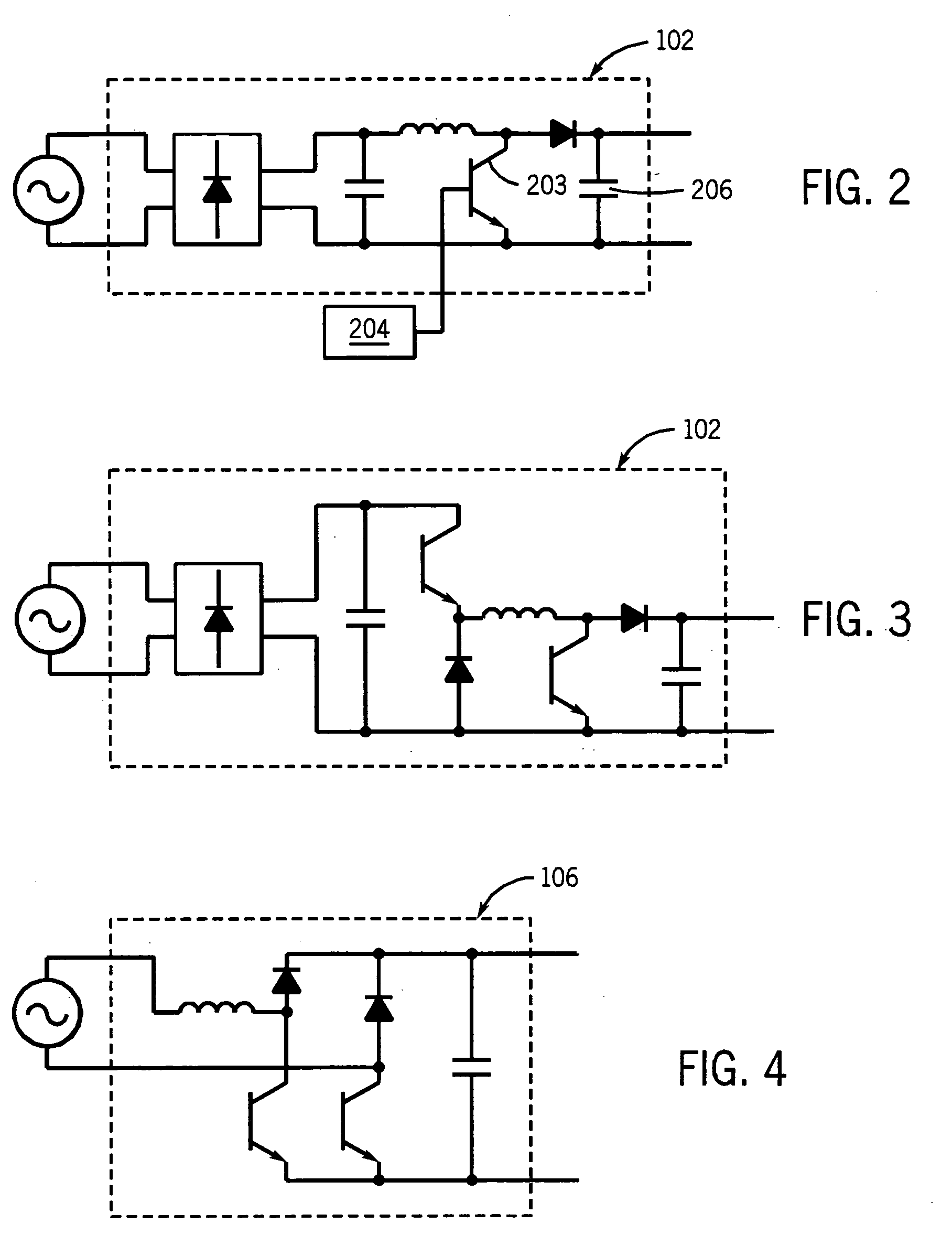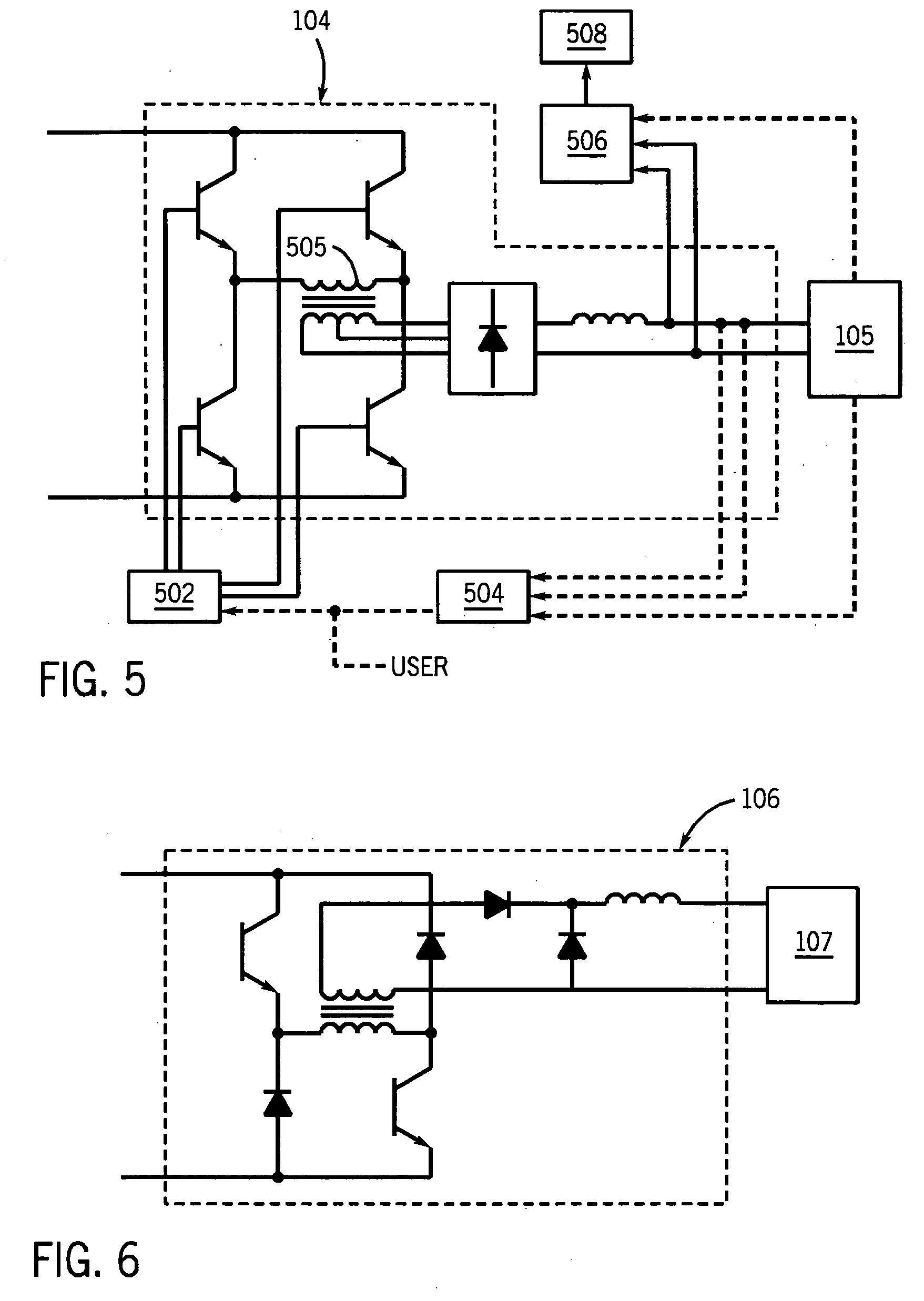Method and apparatus for charging batteries
a battery and charging device technology, applied in the field of battery charging, can solve the problems of not optimally charging batteries, not being able to provide a unique charging current or voltage for each battery, and being unsuitable for battery charging
- Summary
- Abstract
- Description
- Claims
- Application Information
AI Technical Summary
Benefits of technology
Problems solved by technology
Method used
Image
Examples
Embodiment Construction
[0029] While the present invention will be illustrated with reference to a particular battery charger and particular circuitry, it should be understood at the outset that the invention may also be implemented with other circuitry, software and arrangements.
[0030] Generally, the invention is implemented by a battery charger that receives an input, such as an ac input, and provides a dc charging output. Preferably, the battery charger may receive any input over a range of inputs without being reconfigured (i.e., re-linked or re-wired), and may be capable of receiving “dirty” power, such as that from a generator. Also, the battery charger preferably includes an output stage that can either provide a number of voltages for charging different batteries, any voltage, or be designed for a single voltage. There can be a plurality of user-removable output stages. When the output circuits provides a single voltage, or a narrow range of voltages for charging one battery voltage, it is said to...
PUM
 Login to View More
Login to View More Abstract
Description
Claims
Application Information
 Login to View More
Login to View More - R&D
- Intellectual Property
- Life Sciences
- Materials
- Tech Scout
- Unparalleled Data Quality
- Higher Quality Content
- 60% Fewer Hallucinations
Browse by: Latest US Patents, China's latest patents, Technical Efficacy Thesaurus, Application Domain, Technology Topic, Popular Technical Reports.
© 2025 PatSnap. All rights reserved.Legal|Privacy policy|Modern Slavery Act Transparency Statement|Sitemap|About US| Contact US: help@patsnap.com



